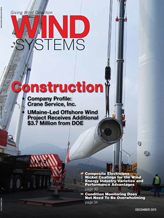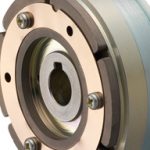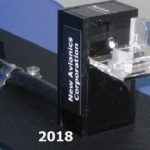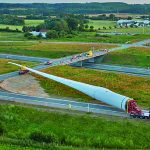DNV GL, the world’s largest resource of independent energy experts and certification body, recently released Turbine.Architect, a new in-house software tool enabling turbine engineers and component developers to quickly calculate the impact of their technology on levelized cost of energy (LCOE) for a realistic wind project. Turbine.Architect uses sophisticated, integrated design algorithms based on decades of design and bladed experience. DNV GL conducted the first public demonstration of Turbine.Architect’s capabilities at the annual European Wind Energy Association (EWEA) event in Paris.
Turbine.Architect supports turbine design and component technology development by quantification of the technical impact of design and component technology on both the turbine system and the entire wind farm, from the foundation to the electrical infrastructure. Turbine.Architect computes realistic values for the capital costs of turbine, balance of plant components, farm operational costs, availability, and farm annual energy production.
The tool’s validated engineering models produce concept-level technical specifications for turbine components and farm items with up-to-date market intelligence translating these specifications into appropriate capital costs. Similarly, operational costs and availability are quantified using models for operations and maintenance that are benchmarked with real field data. Its method to estimate energy production includes losses from rotor aerodynamics, drive train components, and farm wakes, the latter by linking with DNV GL WindFarmer. Turbine.Architect also contains a discounted cash flow model where estimated costs and yield are escalated to LCOE and Net Present Value (NPV).
 The tool is built on the basis of algorithms and many years’ worth of analysis and development performed by DNV GL’s turbine design experts. As well as quick LCOE calculations at the early phases of a given project, the tool allows users to overwrite various components in favor of informing the model with the results from other tools or analysis. The user may then do everything from high-level screening of potential wind turbine design projects to detailed assessment of a specific system or component level technology innovation in the same tool, providing a unified way of presenting costs and calculating LCOE. The flexibility of the tool also allows the user to test various cost reduction opportunities and perform sensitivity analysis, with the overarching objective of supporting an LCOE-driven design process.
The tool is built on the basis of algorithms and many years’ worth of analysis and development performed by DNV GL’s turbine design experts. As well as quick LCOE calculations at the early phases of a given project, the tool allows users to overwrite various components in favor of informing the model with the results from other tools or analysis. The user may then do everything from high-level screening of potential wind turbine design projects to detailed assessment of a specific system or component level technology innovation in the same tool, providing a unified way of presenting costs and calculating LCOE. The flexibility of the tool also allows the user to test various cost reduction opportunities and perform sensitivity analysis, with the overarching objective of supporting an LCOE-driven design process.
The Turbine.Architect service already supported an undisclosed supplier of advanced wind turbine blades and helped steer the development of their advanced technology for biggest LCOE gains. The short times needed to setup Turbine.Architect, run it, and analyze the results proved instrumental. It allowed DNV GL to work alongside the customer and provide inputs that were both technically sound and on time. Further, the holistic view offered by Turbine.Architect provided engineering facts to debunk some lingering opinions that might have resulted in a sub-optimal technology. The end result was an advanced blade concept with the right balance between cost, mass, loads, and aerodynamic efficiency.
“Turbine.Architect has been created by our experts to reduce the risk when designing wind turbine,” said Ben Hendriks, head of section engineering at DNV GL. “Not only does it save a great deal of time — producing a concept design in a matter of minutes rather than days — it also offers a means for those without the time or necessary expertise to still forge ahead in the industry. By offering LCOE-driven design support, we are able to guarantee our customers an improved final result to their project — a faster time-to-market with a more competitive product. By using Turbine.Architect in all design stages of a project, a component designer can play around with various elements, allowing them the freedom to swiftly trial different ideas. We are offering this service to all OEMs and suppliers of key components, whether they are already a DNV GL customer or not.”
DNV GL launched the new tool including a live demonstration at its booth at the EWEA annual event in Paris.
For more information, go to www.dnvgl.com.
— Source: DNV GL




































